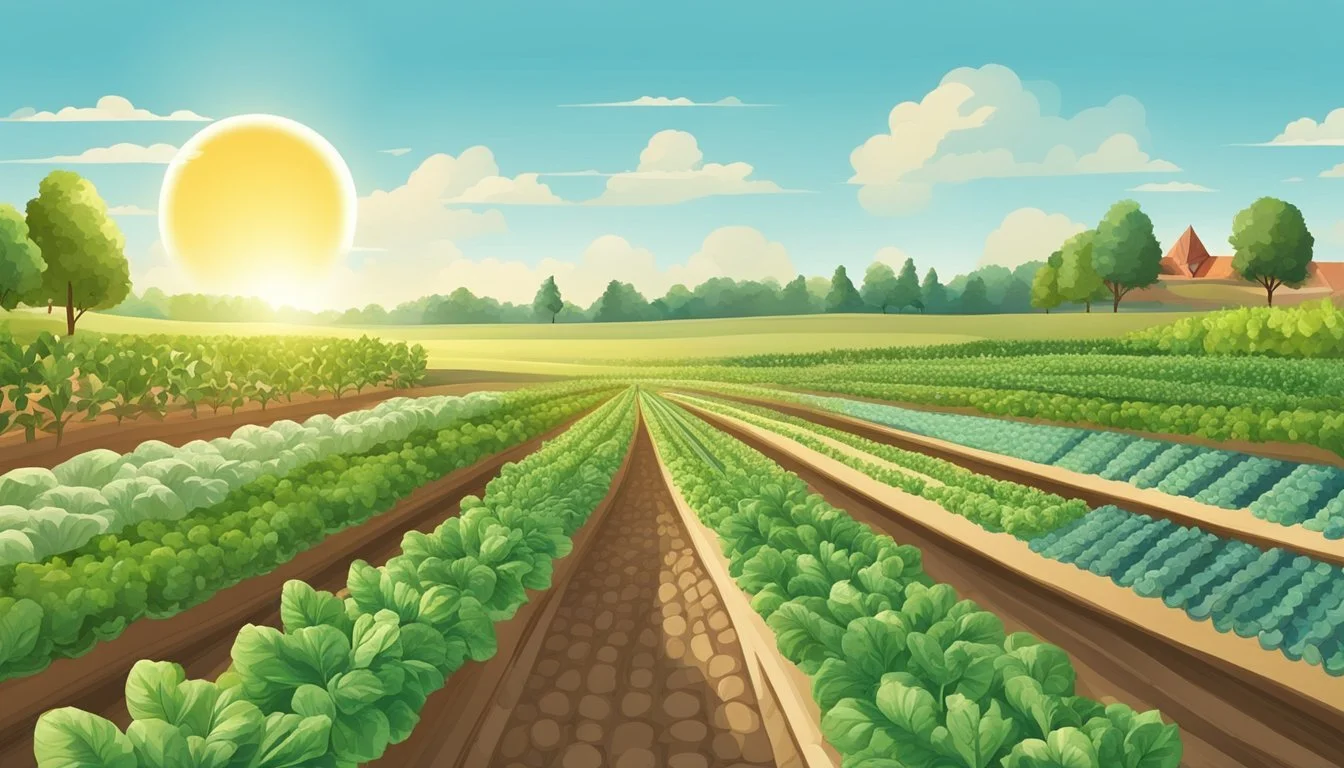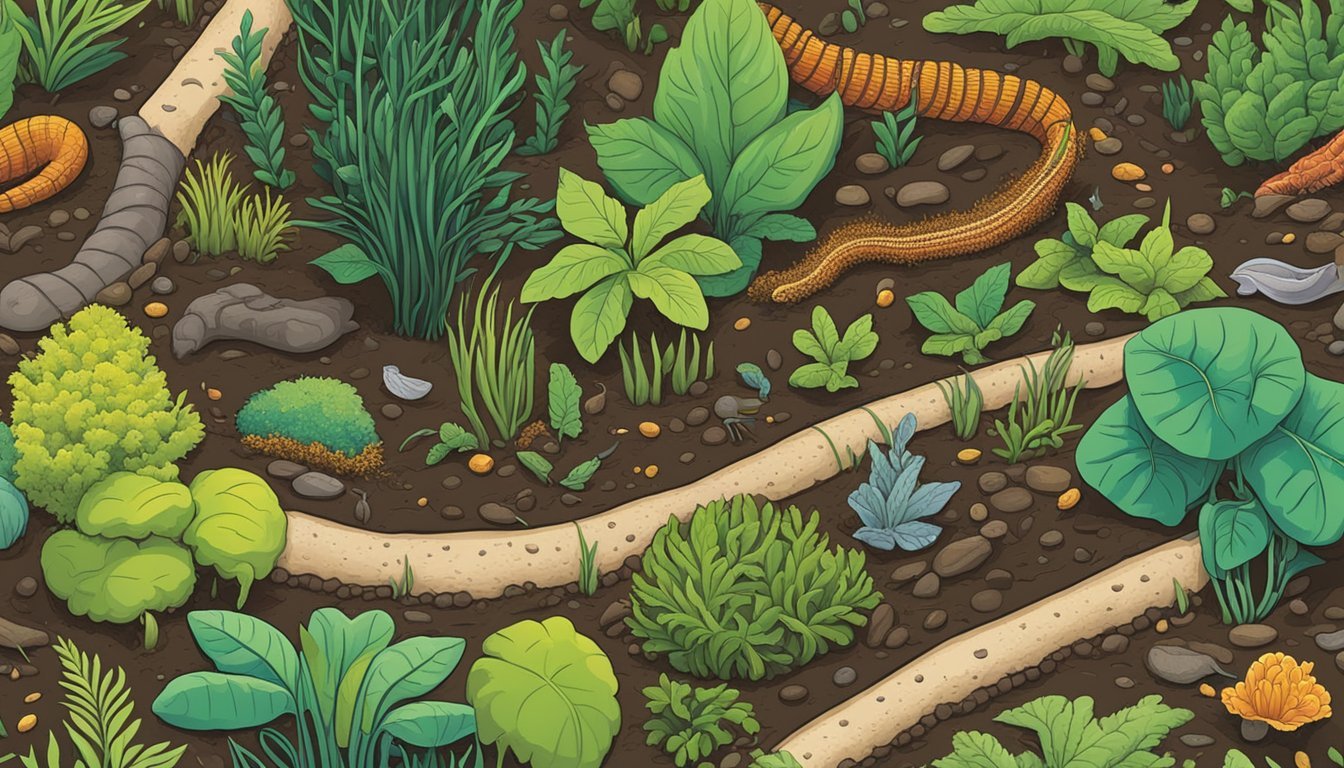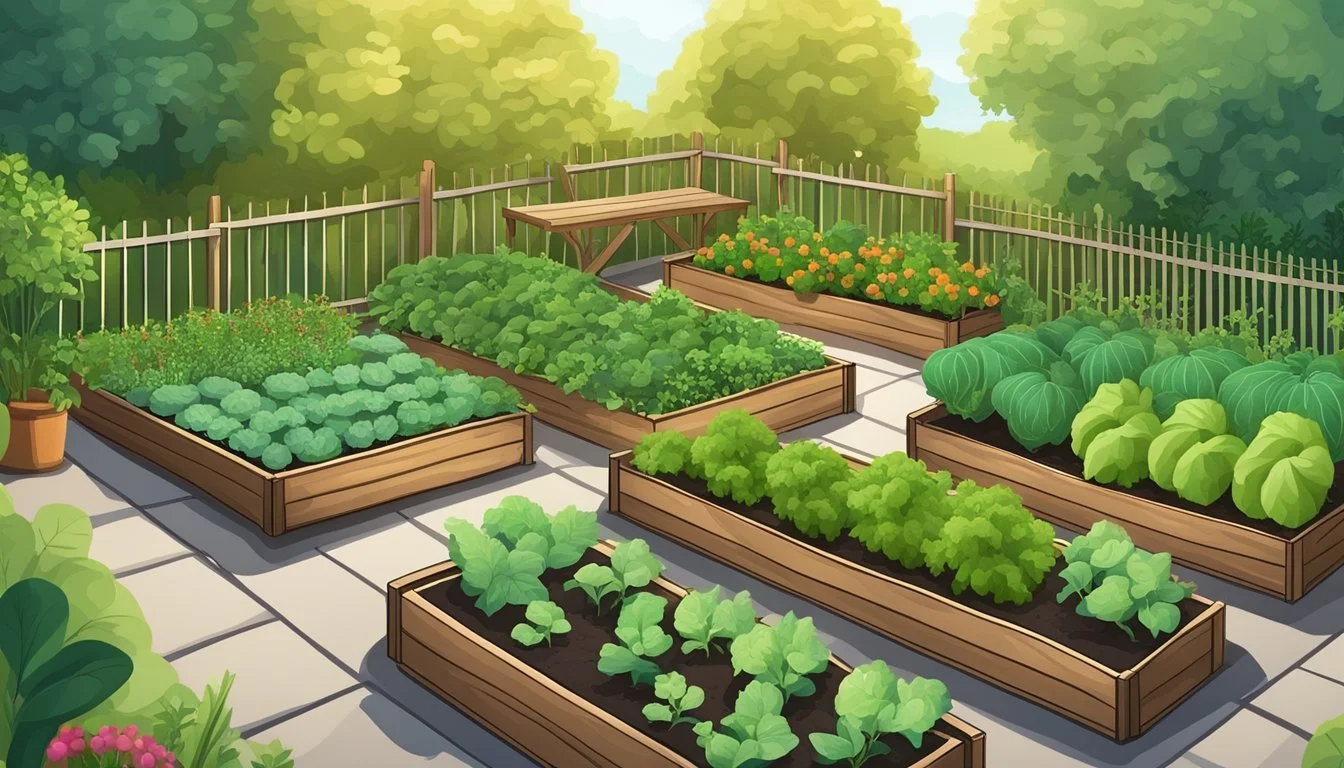How to Grow Your Own Grain-Free Garden
Cultivating a Gluten-Free Oasis
Growing your own grains can be a rewarding experience, allowing for a deeper connection to the food on your table and a hands-on understanding of the agricultural process. Venturing into the cultivation of grains such as wheat, barley, or corn comes with its own set of guidelines and practices that are distinct from typical backyard gardening. Grains require specific conditions for successful growth, and when these are met, even a small-scale garden can yield an impressive harvest.
Starting a grain garden involves careful preparation of the soil and selecting the right time for planting, as different grains have varying seasonal requirements. It's important to understand the lifecycle of the chosen grain; from planting to harvest, each stage demands certain care in terms of water, light, and nutrients. The process does not end at harvest; post-harvest processing such as threshing, winnowing, and proper storage is crucial to ensure the grain is usable for consumption.
Adapting garden space to grow grains can add diversity to home gardening projects, and with the right approach, it is possible to produce high-quality grains on a small scale. This not only contributes to household food security but also offers an educational journey through the ancient tradition of grain cultivation.
Growing your own grain-free garden is an empowering and health-conscious endeavor that allows you to cultivate a variety of wholesome and nourishing produce to support a grain-free nutritional impact. By prioritizing nutrient-dense options and embracing the benefits of grain-free fiber from a diverse range of fruits and vegetables, you can create a thriving garden that aligns with your wellness goals.
For individuals focused on grain-free muscle building or seeking to optimize their overall well-being, a garden abundant with nutrient-rich foods provides essential support for strength and recovery. Moreover, individuals experiencing grain-free weight loss plateaus can benefit from a homegrown selection of fresh, wholesome ingredients to invigorate their dietary choices.
Incorporating items such as grain-free condiments dressings and fresh produce for grain-free tortillas tacos can enhance the flavor and nutritional value of meals, offering a delightful and health-conscious culinary experience. Additionally, considering the challenges of grain-free traveling, a homegrown garden provides a convenient and sustainable source of ingredients to maintain your dietary regimen while on the go. Cultivating a grain-free garden offers a fulfilling and enriching journey toward fostering a health-conscious and sustainable lifestyle.
Planning Your Grain-Free Garden
Creating a grain-free garden requires careful planning to nurture a thriving space. Gardeners should initially consider the quality of their garden soil by ensuring it's rich in nutrients. One can enhance soil health by integrating organic compost, which enriches the land with essential minerals and fosters beneficial microbial activity.
The selection of seeds is paramount for a grain-free garden. Gardeners should seek out clean, non-grain seeds from reputable nurseries or seed banks. This ensures that the plants are appropriate for grain-free gardening and reduces the risk of contaminating the space with unwanted grain varieties.
Sunlight is another crucial element in planning. Most vegetable and fruit plants desire ample sunlight—six to eight hours daily. Therefore, one must observe the garden area to identify the best spots that receive consistent sunlight. In cases where garden space is lacking, considering a container garden can be a flexible and efficient alternative. Containers allow for control over soil quality and can be placed in optimal locations for sunlight exposure.
Here's an optimized plan for starting a grain-free garden:
Soil Preparation:
Enrich the soil with compost.
Test soil quality to ensure it's free from contaminants.
Seed Selection:
Choose high-quality, non-grain seeds.
Opt for diverse varieties to promote a balanced ecosystem.
Garden Layout:
Determine areas with the best exposure to sunlight.
Designate space considering the mature size of plants.
Container Gardening (if necessary):
Select size-appropriate containers for each plant.
Ensure containers have adequate drainage holes.
By addressing these foundations, gardeners can set the stage for a successful and productive grain-free garden.
Selecting Suitable Crops
Creating a grain-free garden involves choosing a variety of plants that thrive without the need for cereal grains. The selection should focus on nutritional value, ease of growing, and the ability to harvest multiple crops throughout the growing season.
Choosing Leafy Greens and Herbs
Leafy greens, such as spinach and kale, are excellent for quick harvesting and provide essential vitamins and minerals. Herbs like basil and parsley serve dual purposes; they are flavorful food enhancers and can also help in pest control. For a well-rounded garden:
Spinach: High in iron and quick to harvest.
Kale: Rich in nutrients, with a longer growing season.
Basil: Aromatic, useful for culinary purposes, and can deter pests.
Parsley: Hardy and can grow in varied climates.
Opting for Root Vegetables
Root vegetables like carrots, beets, and sweet potatoes are staple crops that can be grown in most soil types. They store well through the winter, ensuring a year-round food source.
Carrots: Rich in beta-carotene; prefer loose, well-drained soil.
Beets: Provide both edible roots and greens; require fertile soil.
Sweet Potatoes: High in vitamins; need warm soil and a longer growing season.
Incorporating Berry Varieties
Berries are not only a sweet treat but also a rich source of antioxidants. Strawberries, blueberries, and raspberries can be grown easily and many varieties are perennials, offering a return on investment year after year.
Strawberries: Grow well in pots or beds; require slightly acidic soil.
Blueberries: Need acidic soil; provide fruit over a long season.
Raspberries: Can be invasive; require a dedicated space for controlled growth.
Experimenting with Legumes
Legumes such as beans and peas add nitrogen to the soil, reducing the need for chemical fertilizers, and are a great source of plant-based protein. They can be grown vertically to save space in the garden.
Beans: Many varieties available; can be trellised to save space.
Peas: Prefer cooler weather; can also be trained up supports.
By selecting a combination of leafy greens, herbs, root vegetables, berries, and legumes, a gardener can create a diverse and sustainable food source without the need for grains.
Creating an Organic Soil Ecosystem
To cultivate a grain-free garden that thrives, it's essential to focus on developing a robust organic soil ecosystem that is teeming with life and nutrients.
Understanding Soil Composition
The bedrock of a healthy garden is its soil. Organic soil is composed of minerals, organic matter, water, and air, each playing a vital role in plant health. A well-balanced soil should have ample levels of nitrogen, phosphorus, and potassium, the core nutrients required for plant development. Additionally, maintaining an optimal pH level ensures that these nutrients are readily available to plants.
Applying Natural Fertilizers
Natural fertilizers improve soil fertility without introducing harmful chemicals. Options include:
Compost: A rich source of nutrients that also improves soil structure.
Manure: Should be well-composted to prevent pathogen transfer.
Seaweed and kelp meal: Supply trace elements and act as a natural pest deterrent.
Nitrogen-fixers: Certain plants can fertilize soil by fixing atmospheric nitrogen into a usable form.
When applying these fertilizers, one should evenly distribute them across the garden bed to avoid nutrient imbalances.
Fertilizer Nutrient Provided Application Notes Compost Balanced Apply 1-2 inches to topsoil annually Manure High in N, P, K Use composted manure to avoid pathogens Seaweed Trace minerals Rinse salt off, apply in moderation Kelp Meal Potassium, iodine Use as a slow-release fertilizer
Using Cover Crops and Mulches
Cover crops, such as clover or legumes, are a beneficial way to protect and enrich the soil:
They prevent erosion by shielding the soil surface.
Legume cover crops add nitrogen to the soil without the need for chemical fertilizers.
After cropping, these plants can be tilled into the soil to act as a "green manure," further enhancing organic content.
Mulches are materials spread over the surface of the soil to maintain moisture and improve fertility. Materials can include straw, leaf mold, or bark chips. Mulches also suppress weeds and can help regulate soil temperature.
By following these practices, they can establish an organic soil framework that underpins a productive grain-free garden.
Garden Maintenance Techniques
In maintaining a grain-free garden, gardeners must focus on efficient watering tactics, proactive pest and disease management, and timely pruning and harvesting to promote healthy growth and bountiful yields.
Watering and Nutrient Management
Proper watering and nutrient management are vital for the health of a grain-free garden. It's important to implement a watering schedule that meets the needs of the specific plants while conserving water. Gardens benefit from drip irrigation systems or soaker hoses which deliver water directly to the roots, minimizing evaporation and reducing water waste.
For nutrients, gardeners should conduct a soil test to determine lacking essential nutrients. They can then amend the soil by adding organic compost or tailored fertilizers to address these deficiencies. Ensuring proper drainage is also a key component to avoid waterlogging and root diseases.
Pest and Disease Control
Pest and disease control begin with preventative measures such as selecting disease-resistant plant varieties and maintaining garden cleanliness. Should pests or diseases appear, one could use a variety of non-toxic treatments, like neem oil or insecticidal soaps, which effectively mitigate these issues without compromising the ecosystem.
It is also beneficial to encourage natural predators through companion planting or by creating habitats for beneficial insects. Regular inspection of plants helps in the early detection of problems, allowing for timely intervention.
Pruning and Harvesting
Pruning is essential in a grain-free garden to promote air circulation and reduce disease pressure. Removing dead or diseased plant material prevents the spread of issues and encourages healthy growth. Strategic pruning may also enhance produce yield.
Harvesting should be done at the peak of ripeness for the best flavor and nutritional content. It's also necessary to harvest regularly to encourage plants to continue producing. Post-harvest, gardeners should clear any plant debris to maintain cleanliness and reduce the likelihood of diseases carrying over to the next growing season.
Container and Raised-Bed Gardening
In container and raised-bed gardening, the right selection of containers, attention to drainage and aeration, and use of vertical space are pivotal for a thriving garden.
Choosing the Right Containers
When selecting containers for gardening, they must be tailored to the size and growth habits of the plants. For grain-free plants with shallow roots, smaller containers may suffice, while deeper-rooted plants will require larger ones. Using 5-gallon buckets is a practical choice — they are easy to find and convenient for carrying. Alternatively, gardeners can repurpose household items like totes for larger raised bed projects, as long as they ensure capacity and durability.
Ensuring Proper Drainage and Aeration
Proper drainage is crucial to prevent waterlogged soil, which can lead to root diseases. Each container should have ample holes at the bottom. Covering these holes with a layer of pebbles or broken terracotta pots before adding the soil can improve water flow. In raised beds, a mix of soil and amendments such as coco coir, mushroom compost, vermiculite, and perlite creates an airy, well-draining growing medium.
Maximizing Space with Vertical Solutions
Vertical gardening maximizes space and is especially beneficial for those with limited garden areas. Trellises, shelves, or stacking containers elevate plants, increasing air circulation and sun exposure. Climbing varieties of plants can be guided up vertical structures, leaving more ground space for other crops. This is particularly effective in container gardening where ground space is at a premium.
Complementary Gardening Strategies
To grow a grain-free garden efficiently, gardeners can adopt several complementary gardening strategies. These strategies enhance soil fertility, improve plant health, and create a self-sustaining ecosystem within the garden.
Implementing Permaculture Principles
Permaculture is a holistic approach that integrates land, resources, people, and the environment through mutually beneficial synergies. A permaculture approach emphasizes the use of compost and mulch to enrich and protect soil, reducing the need for external fertilizers. Utilizing compost not only recycles waste but also introduces beneficial microorganisms into the soil. Applying mulch retains moisture, suppresses weeds, and gradually fertilizes as it decomposes.
Benefits of Permaculture:
Enhances soil structure and fertility
Creates sustainable and low-maintenance garden systems
Integrating Companion Planting
Companion planting involves placing plants together that can mutually benefit each other. This technique maximizes space and can help in pest management.
Examples of Companion Planting:
Planting tall plants like sunflowers can provide shade for more sensitive crops.
Legumes can fix nitrogen in the soil, making it available for nitrogen-hungry plants.
The interplanting of fast and slow-germinating plants can aid in distinguishing garden rows.
Attracting Beneficial Wildlife
A grain-free garden can be enhanced by attracting wildlife that contributes to the health and pollination of plants. Gardeners can encourage beneficial insects, birds, and other wildlife by planting a diversity of crops and creating habitats for them.
Methods to Attract Wildlife:
Planting flowering plants known to attract pollinators like bees and butterflies.
Installing birdhouses or baths to invite insect-eating birds that naturally control pests.
Harvesting and Storage
In a grain-free garden, proper techniques for harvesting and appropriate methods for storage are critical to maintaining the quality and longevity of your produce. One must gather crops at their peak and store them in conditions that preserve their freshness and nutritional content.
Best Practices for Crop Harvesting
When harvesting, one should pay close attention to the maturity of the produce. Vegetables and fruits should be picked when they are ripe, as this is when their flavors and nutrients are most concentrated. To harvest, one might use hands or tools such as pruners or scissors, depending on the delicacy of the plant. Timing is also crucial; most crops are best harvested in the cool early morning hours to reduce the stress on the plants and to maintain the freshness of the produce. During the process, handling the produce with care to avoid bruising is essential, which can lead to premature spoiling.
Long-Term Storage Solutions
For long-term storage, the key is to mimic the natural conditions that the produce would prefer, varying between cool and dry or cool and humid environments. Certain root vegetables and squashes may prefer a cool, dry place with good air circulation, while others like carrots and leafy greens need higher humidity levels.
Root Cellars: Traditional and effective, root cellars use the naturally cool and stable underground temperature to store produce.
Temperature range: Maintain below 60°F to prevent spoiling.
Humidity level: Keep at 85-95% for most root crops.
Airtight Containers: These are excellent for storage, ensuring that moisture and pests are kept out, preserving the food's integrity.
Materials: Glass, plastic, or metal with sealable lids.
Considerations: Use opaque containers or store in a dark place to protect from light.
Refrigeration: Some produce may need to be stored in the refrigerator to extend its life, especially leafy greens and certain herbs.
Temperature range: Set the refrigerator between 32°F and 40°F.
Packing: Store in perforated plastic bags to provide the necessary moisture while allowing air to circulate.
And lastly, freezing can be used for long-term storage of certain produce to preserve its freshness and nutritional value. Quick-freezing small pieces on a tray before transferring them to a freezer-safe airtight container can help maintain the quality of the harvest.
Homegrown Recipes and Uses
In this section, the focus is on turning homegrown grains into nutritious meals and effective homemade remedies. The reader will discover how to make the most of their garden's bounty to enhance both their dining and wellness experiences.
Preparing Homemade Meals
Gardeners can take pride in turning their freshly harvested grains into an array of homemade meals. A staple recipe to consider is homemade bread, which can be augmented with herbs and vegetables like zucchini for sensory experiences that store-bought loaves simply cannot match. Here's a simple approach to a basic bread recipe:
Ingredients:
3 cups of milled homegrown grain (e.g., wheat, rye)
1 packet of yeast
1 teaspoon of salt
1 tablespoon of sugar
2 tablespoons of oil
1 1/4 cups of warm water
Directions:
Combine yeast, sugar, and water; let sit until frothy.
Mix milled grain and salt in a large bowl.
Stir in the yeast mixture and oil.
Knead the dough until smooth.
Let it rise, punch down, and then form into a loaf.
Bake until golden brown.
Kitchen scraps shouldn't go to waste either. Carrot tops, beet greens, or leftover herbs can make flavorful additions to salads or garnishes for dishes, allowing one to fully utilize every part of their garden produce.
Creating Homemade Remedies
Homegrown grains and herbs can also be transformed into homemade remedies, offering a natural option for maintaining health. Chamomile or lavender grown alongside grains can be used to make calming teas, which may help with relaxation and sleep.
To create a simple remedy tea:
Ingredients:
1 teaspoon of dried chamomile flowers or lavender buds
1 cup of boiling water
Directions:
Add dried flowers to a cup.
Pour boiling water over the flowers.
Cover and steep for 5 minutes.
Strain and enjoy.
These homemade solutions offer the gardener a way to bring the benefits of their labor into their everyday life, fostering a closer connection to the food they consume and the remedies they use.
Expanding Your Home Gardening
Expanding a grain-free garden at home involves integrating livestock like chickens and advancing one’s horticultural skills. These enhancements create a sustainable and productive garden ecosystem.
Raising Chickens for a Sustainable Cycle
To foster a sustainable garden, incorporating chickens can be highly beneficial. They provide natural fertilizer and aid in pest control. When feeding chickens, ensuring a balanced diet is crucial for their health and the garden's productivity.
Chicken Feed: Utilizing whole grain chicken feed is an excellent start. It's rich in nutrients and supports the chickens' growth and egg production.
Homemade Chicken Feed: One can create homemade chicken feed by mixing grains such as corn, wheat, and oats with protein sources like peas or fish meal.
Kitchen Scraps: Feeding kitchen scraps to chickens reduces waste and supplements their diet, but one must avoid toxic foods like onions or chocolate.
Grit: Providing grit like small stones is essential for chickens' digestion, helping them break down their food.
A beginner's guide should include a detailed plan for feeding schedules and proportions of each feed component to ensure a balanced diet for the chickens.
Learning Advanced Gardening Techniques
Advancing gardening techniques can maximize space and enhance productivity. Employing methods such as vertical gardening allows one to grow more crops in the same footprint. One might consider growing leafy greens and brassicas in early spring, followed by warm-weather crops, and then a third planting of cool-season varieties.
Mulching: Applying mulch around plants maintains moisture, suppresses weeds, and can improve soil quality.
Space Utilization: Proper spacing, as critical as 1 ½ inches deep for spring wheat, ensures plants have room to grow without competition for resources.
Watering and Fertilizing: Regular watering and fertilization, tailored to the crop's needs, are essential for a thriving garden. A simple method to check for water necessity is to insert a finger about 2 inches into the soil—water deeply if dry.
Embracing these techniques provides a solid foundation for gardeners looking to expand their grain-free gardens.
Understanding the Benefits of a Grain-Free Garden
A grain-free garden can yield a multitude of benefits, enhancing both the quality and diversity of food available. Without grains, a gardener may diverge into a broader array of nutrient-rich crops such as vegetables and fruits, which are often high in fiber, calcium, and magnesium. These nutrients are vital for maintaining a healthy body, contributing to bone strength, cardiovascular health, and digestive function.
Growing a variety of non-grain plants can also lead to a richer taste experience. Vegetables and fruits can offer a spectrum of flavors that not only satisfy the palate but also can invoke memories of traditional family meals or pleasant culinary explorations. Also, the absence of grains can translate into fewer concerns about gluten, which is beneficial for those with sensitivities or seeking to reduce gluten intake.
Nutrient Found in Non-Grain Plants Fiber Beans, berries, broccoli Calcium Spinach, kale, figs Magnesium Spinach, nuts, avocado
Moreover, tending to a diverse garden encourages interactions with a variety of plants, which can be a more engaging and educational experience. One learns about the specific growth patterns and needs of each plant, fostering a deeper understanding of the ecosystem within their garden.
In addition, as a gardener curates their selection of non-grain plants, they have the opportunity to influence the nutritional value and quality of their harvest. They control the cultivation process from soil amendment to pest management, ensuring that the produce is as wholesome and pesticide-free as desired. This hands-on approach often results in superior quality food that is reflected in the vibrant flavors and textures on the table.
Conclusion
Growing a grain-free garden can be an enriching and sustainable endeavor, offering numerous benefits such as dietary diversity and environmental conservation. One must remember that success hinges on proper planning, soil preparation, and choice of suitable crops for their specific climate and soil conditions.
Key Takeaways:
Planning: Assess the garden space and select appropriate grain-free crops.
Soil Preparation: Ensure the soil is fertile and well-drained.
Crop Selection: Choose crops that thrive in the local climate and soil conditions.
It's essential for gardeners to continuously learn and adapt their practices. They should observe their crops, keep records, and adjust their methods for better yield and health of the plants. In doing so, one can maintain a robust and productive grain-free garden.
Suggested Next Steps:
Research: Investigate grain-free plants' compatibility with your garden environment.
Connect: Engage with local gardening communities for shared wisdom and support.
Experiment: Try cultivating a range of grain-free crops to discover what grows best for you.
By integrating these strategies, gardeners will foster a diverse, sustainable garden ecosystem, rich in nutritious, grain-free options. They should feel confident in their ability to cultivate a healthy, bountiful garden that aligns with their dietary needs and environmental values.













